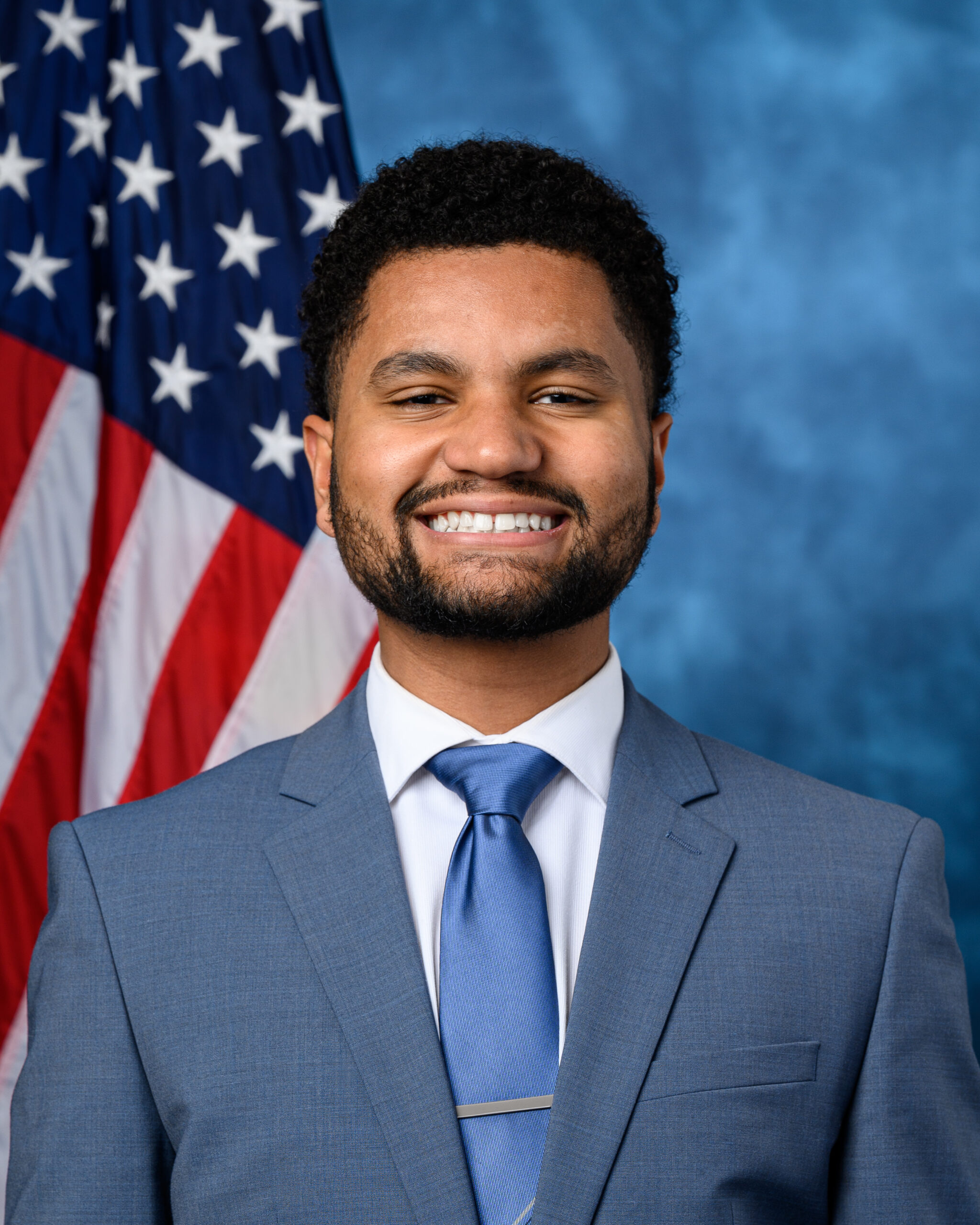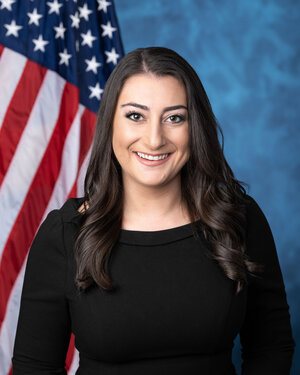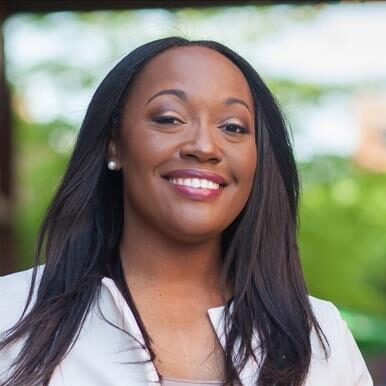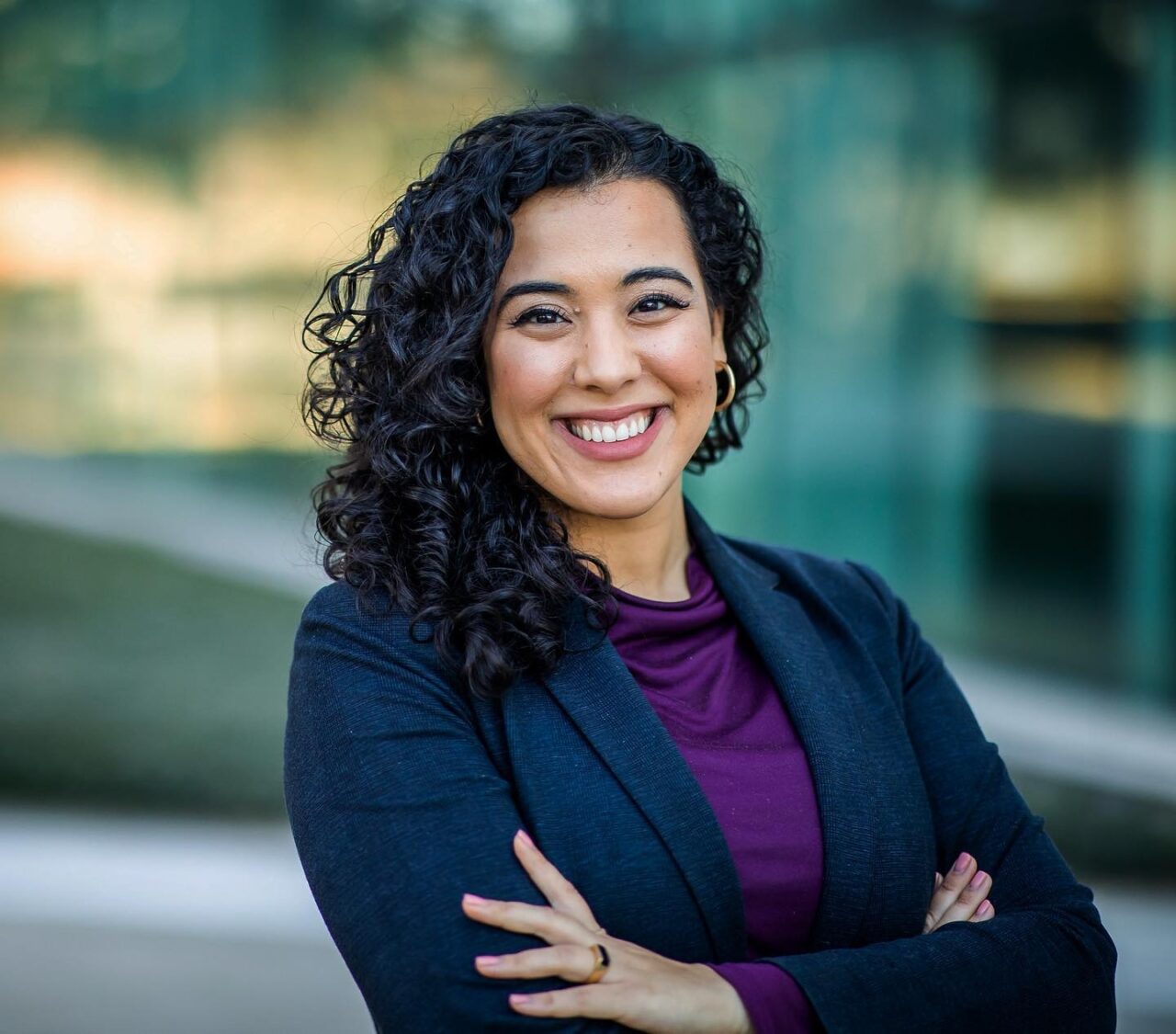48 Reasons to Feel Optimistic Today
May 11, 2021
MAP’s work shows that the youth infusion in politics is one of the best reasons to feel optimistic today.

Yeah, we get it. We feel the languishing effects of the past year, too. So we decided to go in search of some good news in the world outside, and it didn’t take long to uncover all kinds of it. While we’re stoked that many Americans are getting the COVID-19 vaccine and that some of our favorite summer outdoor pursuits are right around the corner, we dug even deeper to find more good things that came out of the past year. Like outdoor companies investing in new inclusion efforts, creative environmental developments, and scientific studies showing that 2020 actually made our brains stronger. And did we mention new research shows that wine and cheese are good for you? We hope this surprising list inspires you to seek joy and adventure this season. We can’t wait to see you out there.
The Kids Are Alright
The coming generation of adventure athletes are already going big—very big. Erin Brooks is a 13-year-old surfing phenom notching impressive competition results and landing tricks that still elude many adult pros. Fourteen-year-old Jackson Dorian, son of legendary surfer Shane Dorian, is doing the same. Skier Kai Jones, 14, is sending backcountry cliffs, hucking road gaps, and is one of Red Bull’s youngest sponsored athletes. At 12, skateboarder Sky Brown is a Nike athlete—and has her eye on the Olympics. And last fall, 17-year-old runner Tierney Wolfgram set a new junior marathon record, covering the distance in just 2:31:49. —Abigail Barronian
And Old-Timers Are Still Blowing Our Minds
Like 85-year-old Dale Sanders, who in October became the oldest person to complete the 48-mile Grand Canyon Rim-to-Rim-to-Rim route, with its almost 20,000 vertical feet of descents and climbs. —Kelsey Lindsey
Walls Are Coming Down
The North Face’s new Explore Fund Council, led by Jimmy Chin and Lena Waithe, has big plans—and a big budget—to make the outdoors more inclusive By Kathy Karlo
The Cubicle’s Reign Is Over
Last year we discovered how easy it is to convert office jobs into remote ones, helping millions of Americans experience life without time-sucking commutes and inflexible work schedules. Of course, it also revealed the size of our digital divide. If we want to become truly untethered from office parks and be able to work from anywhere after the pandemic, we’ll need high-speed internet to be just as available in rural and wilderness-adjacent areas as it is in urban ones. Enter Elon Musk. The tech visionary’s company SpaceX launched a thousand low-Earth-orbit satellites to build Starlink, a network that will eventually beam high-speed internet from space to almost anywhere on the planet. Last fall the company rolled out a trial program, Better than Nothing Beta, to select locations in the U.S., Canada, and the UK, and starting this year, it aims to launch 100 new satellites per month to expand its territory. Even with limited reach, the technology is already making a difference. In the U.S., several rural school districts have begun pilot programs with Starlink to make remote learning more equitable for students without internet access at home. And last fall in Canada, Starlink successfully delivered broadband internet to a handful of First Nations communities that previously were forced to make do with slow service. For now, Starlink’s $499 receivers, which according to the company are about the size of a pizza box, aren’t portable enough to be vanlife-ready, but Musk has intimated that mobile units are a near-term goal. —Christopher Keyes
And You Can Keep Wearing Your Sweatpants
We all rediscovered comfortable apparel last year, and the outdoor industry was uniquely well positioned to outfit the work-from-home trend. Sales of leggings alone rose 21 percent in the U.S. in 2020. —Ariella Gintzler
Outdoor Dining Will Continue
Restaurant culture was transformed in 2020. Eating on sidewalks, patios, and in parking lots became a coronavirus-induced trend that’s bound to outlive the pandemic, reshape cities, and awaken urbanites to what hikers, climbers, and backcountry campers already know: everything tastes better outside. —Rachel Levin
Handcyclists Are Shredding Singletrack
Dustin Berg plans to make New Mexico’s mountain-biking trails accessible to adaptive athletes this summer. Paralyzed from the waist down after a motorcycle accident, Berg, an avid angler and camper, started Go Unlimited in 2005 to provide people with disabilities access to adventure sports. Berg is using off-road handcycles made by ReActive Adaptations, a company in Colorado. The rigs are full-suspension, have 27.5-inch rear wheels, and are ready to take on anything a trail has to offer. —Mary Turner
The World’s Best Destinations Got Some R&R
During our forced pause, some of the world’s most overtouristed spots caught a much needed break. Now they’re showing signs of revitalization, and those who oversee them are rethinking their approach to management. According to a recent World Travel and Tourism Council report, “Improvements in air quality and pollution have been observed [around the world], from blue skies in Kathmandu and clear waterways in Venice to stingrays in Dubai.” Many countries are investing in tourism infrastructure, among them Iceland, which put $12 billion toward improving its roads, popular tourist sites, and national parks. Raja Ampat, an Indonesian archipelago and diving mecca that had 200 vessels operating in its waters just prior to the pandemic, has put in place new regulations to limit the number of boats, in order to safeguard marine biodiversity. Dubrovnik, Croatia, which received nearly a million cruise-ship passengers in 2019, is taking a similar approach. “The city saw COVID-19 as an opportunity to implement Global Sustainable Tourism Council destination-management standards, which include limiting day-use visitors during the high season,” says James Sano, vice president of travel, tourism, and conservation at the World Wildlife Fund. Meanwhile, in a 2020 survey conducted by business development firm Publicis Sapient, 58 percent of respondents said that when it comes to future travel, they are thinking more about the environment and sustainability. —Erin Riley
Wine and Cheese Are Good for Your Brain
A recent study published in the Journal of Alzheimer’s Disease, based on a survey of 1,787 adults in the UK, suggests that consumption of cheese and red wine can protect against age-related cognitive decline. Now if we can just get tequila added to that list. —Maren Larsen
Wildfire Tech Is Hot
The Forest Service has begun using three cutting-edge innovations in California, which had the worst fire season in history last fall, in order to put out fires faster and reduce risk to crews. Lack of visibility has halted efforts in the past, which is why the Air Attack 5-1 is a game changer. The manned craft has infrared technology that can identify hot spots that are otherwise impossible to see. “It’s like Predator vision,” says Bob Baird, the state’s regional fire director. The Air Attack can fly for 24 hours, enabling pilots to drop water at night instead of waiting until daybreak. It also serves as the firefighting effort’s in-air coordinator, with a copilot relaying data like the location of power-line hazards to those on the ground. Even newer are UAS drones. (UAS stands for unmanned aerial systems.) These are sent to areas too dangerous for firefighters, where they transmit real-time video that determines how fast a fire is burning and which direction it’s moving. And to track fires with a greater radius is Fire Watch, a system made possible by high-flying Department of Defense aircraft, advanced satellite systems, and remote sensors. Baird has seen the system track multiple fires spanning more than 220 miles, and it has proved essential when ordering evacuations. —Tasha Zemke
We’re Adopting More Pets
One million: That’s the number of puppies and other animals that were adopted from shelters between January and October 2020. And applications submitted to the ASPCA to foster dogs and other pets more than doubled from March through October compared with the same period in 2019. —Maura Fox
Outdoor Schools Are Thriving
Since the school year began, my second-grader has attended a free forest school with a small group of kids who roam the woods of a local nature center with a teacher, learning about weather, animals, and more. I wish more children could experience it, and not just during a pandemic. A growing group of advocates and educators think that this might be outdoor schooling’s moment to finally go mainstream, says Sharon Danks, founder of Green Schoolyards America and coordinator of the collaborative National COVID-19 Outdoor Learning Initiative. While being outside results in a lower risk of virus transmission, outdoor classes also have proven benefits for mental and physical health and a child’s ability to learn. An increasing number of public schools have signed on to explore outdoor options, Danks says. Since June of 2020, more than 850 people across the country have attended at least one online meeting with Green Schoolyards, and before last fall, the Portland, Maine, public school district built 156 outdoor classroom spaces, with plans to use them year-round. This type of schooling “solves a lot of the dire and urgent problems that people have right now,” Danks says. But when teachers and students realize how happy they are to be outside, she suspects they won’t ever want to go back inside. —Emily Sohn
More People Got Outside in 2020—and the Trend Shows No Sign of Slowing
46: Percentage of people in the U.S. who started or returned to camping.
$4.9 billion: Amount spent on bikes from January through November, an increase of 70 percent compared with the same period in 2019.
360,034: Number of visitors to Yellowstone National Park in October, a 110 percent increase from the previous year.
69: Percentage of people who plan to incorporate more outdoor activities into their lives post-pandemic, according to a poll by the recreational Boating and Fishing Foundation. —Maura Fox
The Great Barrier Reef Isn’t Dead After All
The world’s largest barrier reef still faces threats, but a new pinnacle of coral that’s more than 1,690 feet high was discovered by scientists in October, and it’s teeming with marine life. —Mary Turner
People Are Actually Pretty Decent
The evidence of the goodness of humanity is everywhere, according to Dutch historian Rutger Bregman. Pay attention to it with his strategies and you’ll feel much better. By Ryan Krogh
Carbon-Neutral Is the New Normal
In September, REI announced that it would use offsets to become carbon-neutral in 2020 and work to halve its carbon footprint by 2030. The retailer joins a growing list of outdoor companies committed to offsetting their emissions, including Adventure Journal, BioLite, Klean Kanteen, Nuun, and Peak Design. —S.M.
What Doesn’t Kill You Might Actually Make You Stronger
New research looking into a phenomenon known as post-traumatic growth shows that it’s possible to thrive after challenging life events. Here’s how. By Emily Sohn
Wild Critters Are Clawing Their Way Back
In November, Coloradans approved an initiative to reintroduce gray wolves by 2023. The gray wolf was hunted to extinction in Colorado, and this is the first time a state has voted to bring back a threatened species. Last year saw other bright spots for animals: Kenya announced that its elephant population had doubled in the past 30 years, and the U.S. fossil-fuel industry’s permits for seismic blasting off the Atlantic coast expired, sparing marine species life-threatening noise pollution. —Sophie Murguia
Biodegradable Gear Is Finally Here
In 2018, PrimaLoft announced that it had created the world’s first biodegradable insulation. The synthetic fill, called Bio, has a sugar-like coating that encourages microbes to start breaking it down once it hits a landfill or an ocean, but not before. The only by-products? Water, carbon dioxide, methane, and humus (decayed organic matter). Starting last fall, customers were able to buy jackets incorporating the fill in products from Jack Wolfskin, Maloja, Norrøna, and Reusch. —Ariella Gintzler
Your Reading List Just Got Better
These will be the books on our bedside table this spring —Luke Whelan
-
The Third Pole: Writer and mountaineer Mark Synnott embarks on an expedition up the world’s tallest mountain to solve the mystery of what happened during George Mallory and Sandy Irvine’s infamous 1924 Mount Everest attempt.
-
The Comfort Crisis: Michael Easter, an acclaimed science writer, travels around the globe to see how seeking out physical and mental discomfort may counterintuitively be the key to health and happiness.
-
Under a White Sky: In her latest book, environmental journalist Elizabeth Kolbert talks to biologists, engineers, and physicists to learn if humans can use science and technology to undo the damage we’ve wrought.
-
The Lost Boys of Montauk: Amanda M. Fairbanks writes about the tragic 1984 disappearance of a Long Island commercial fishing boat during a nor’easter to explore the history of Montauk’s transition from a sleepy fishing village to an overcrowded weekend haunt for New York’s one percent.
Farmers Are Taking Over Our Roofs
Rooftops have become a prime target for large-scale urban agriculture. In Paris, construction has begun on what promises to be the world’s largest rooftop farm—about the size of two soccer fields. As of early 2021, one-third of the Nature Urbaine organic garden was complete, with another third set to open this spring; the company in charge of the project anticipates growing 20 tons of food. In 2020, Lufa Farms opened up the largest rooftop greenhouse in Montreal. It is the company’s fourth facility in the city, and Lauren Rathmell, its founder and co-CEO, says it won’t be the last. Currently, the greenhouses supply approximately 2 percent of Montreal’s population with fresh vegetables. Rathmell wants to get to the point where she can offer those goods to everyone in the city. She says that would require converting the roofs of 19 shopping centers to grow enough produce for her 1.7 million neighbors. In New York City, Gotham Greens, which launched in 2009, now supplies rooftop-grown produce to 2,000 stores across the U.S. and has facilities in Chicago, Baltimore, Denver, and Providence, Rhode Island. In addition to providing fresh fruit and vegetables to urban communities, reducing the distance food travels also lowers its carbon footprint. Plus, Rathmell says that many rooftops are heat sinks, meaning that they trap the warmth of the sun. Covering roofs with greens keeps the buildings cooler in summer. —A.C. Shilton
The Alt-Meat Revolution Is Upon Us (and It’s Delicious)
Research in 2017 from the Sentience Institute found that 54 percent of meat-eating Americans would prefer to eat less of it, for either ethical or environmental reasons. By creating a product that’s reliably similar, Beyond Meat and Impossible Foods acknowledged that it’s OK to like the taste of beef even as you disdain the cruelty imparted by industrial animal agriculture. Venture firms are throwing cash at the category. “In the first half of 2020, funding of alternative proteins substantially surpassed what the industry raised in all of 2019,” says Caroline Bushnell, director of corporate engagement for the Good Food Institute, a nonprofit that promotes plant-based eating. Fast-food companies are jumping in, too: Burger King unveiled the Impossible Whopper in August, and the McDonald’s McPlant burger will arrive sometime this year. Meanwhile, Singapore recently became the first country to approve the sale of lab-grown meat. —A.C. Shilton
We’re All Running Now
Thanks to activists like Carolyn Su, the sport is becoming more welcoming
When Carolyn Su discovered the online running community while scrolling on Instagram, 16 years after she’d first laced up her shoes, she was all in. But as the 37-year-old stay-at-home mom devoured content and connected with other runners, she noticed something. In a sport that was supposed to be open to everyone, most people looked the same—and not like her.
The tipping point came in 2018. Sitting at a running event surrounded by white people, she wondered: If the stories told on panels, in the media, and on social channels were intended to be representative of all runners, why couldn’t she relate to them?
She felt like an outsider, and not for the first time. As a Taiwanese American growing up in Texas, she experienced a constant pressure to prove she belonged. “There’s a dissonance and loneliness that comes from participating in a sport you love but that is blind to the ways it’s exclusive,” says Su, who now lives in Massachusetts.
Su knew a more robust, multifaceted running community existed. She’d seen it when she searched hashtags like #AsianRunners, #BlackRunners, and #NativeWomenRunning. But those voices were all but absent from mainstream media. So she created @diversewerun in 2018 as a central hub to amplify their stories through weekly features on runners. “It’s not just for people of color to see ourselves represented, but to broaden the mindset of the majority culture to recognize that there’s not just one kind of lived experience,” she says. “It helps us grow in empathy, too.”
The account, which now has nearly 11,000 followers, has helped many runners of color process their own experiences. Some of the people profiled have later been picked up by the media, including Su herself, who’s been featured in Runner’s World and on podcasts. She has also hosted panels on important issues like mental health and safety.
One day she hopes to bring together all kinds of different running crews at a race where, she says, “we’re able to look around and see: this is DiverseWeRun.” —Christine Yu
Being Vulnerable Is OK
One of my oldest friends drifted through my hometown early last fall during a merciful lull between waves of the pandemic. Softened by wine and starry skies, we talked about things we had never opened up about: the depression and anxiety we had been dealing with and the ways we felt unmoored.
She had recently reconnected with some college friends and remarked that they had done the same thing, noting to one another how 2020 had challenged them, and the therapeutic approaches and SSRIs that had helped them through.
“There have been a huge number of conversations throughout COVID-19 about the impact, and one of the silver linings is that it has made people as a community more aware of their mental health,” says Steven Taylor, a professor and clinical psychologist at the University of British Columbia and author of The Psychology of Pandemics: Preparing for the Next Global Outbreak of Infectious Disease. If we come away with a greater awareness of our own vulnerability—and more gentleness toward ourselves and others—we will be better for it.
In those few moments when I sat face to face with the people I love in the past year, there was a mutual understanding that none of us were perfectly OK. We were honest about how we were weathering the storm and what we needed from one another. Of course, we have always been each other’s keepers. The hard times simply have a knack for reminding us of that. —Abigail Barronian
The Pebble Mine Is Toast (for Now)
In November, Alaska’s most controversial extraction project suffered what’s likely to be a fatal blow. The Trump administration brought the proposal back to life in 2017, and last fall, many expected it to approve the first federal permit needed to develop the mine. But after Donald Trump Jr. came out against it and tapes of the mine project’s CEO were leaked, the Army Corps of Engineers denied the permit, saying the proposal, which threatens Bristol Bay’s massive salmon run and the economy that depends on it, did not comply with Clean Water Act guidelines. —Luke Whelan
There’s a Youth Infusion in Politics
New leaders like Maine’s Chloe Maxmin will transform the system
In November, when Chloe Maxmin of Maine won a seat in the state senate, she became that body’s youngest member. She’d already earned a similar distinction once before. For the previous two years, Maxim, now 28, was the state’s youngest female representative. Her focus all along? To shift the way politicians talk about climate change.
Maxmin grew up in the small town of Nobleboro and got involved with grassroots climate organizing at the age of 12. By the time she graduated from Harvard, she’d become disillusioned with federal government. “It felt so hopeless to me,” she says. “No matter how many people protested Keystone XL, Obama still approved it.” So in 2018, when a state house seat opened up in her district, she jumped at the chance to run.
Maxmin is part of a larger shift in politics. According to the Millennial Action Project, there are 81 millennials in Congress and 1,641 in state legislatures. In the 2020 midterms, Vermont elected its first openly transgender state legislator, 26-year-old Taylor Small.
They’re coming up with new strategies, too. Instead of campaigning to her Democratic base, Maxmin spent time knocking on doors with Trump signs out front. “In rural America, where the progressives have really lost power, there are a lot of people who have been left behind, people who have never talked to their rep or senator at the state level,” she says. Her approach worked.
One year into her tenure as a representative, Maxmin introduced Maine’s Green New Deal. Among other things, it increased solar requirements for publicly funded building projects, and it mandated that new grid-scale energy projects hire 10 percent of their employees from apprenticeship programs, to support the move away from fossil fuels by facilitating job retraining. “The idea of the Green New Deal was to draw attention to a different way of talking about climate change, one that’s rooted in the rural working space,” she says. The bill passed.
Maxmin and a group of state legislators also worked with the governor to create the Maine Climate Council, a bipartisan group that weighs in on balancing the legislature’s climate goals with peoples’ needs. Next up? Ensuring that Maine’s transition to renewable energy benefits everyone, plus more climate bills. “What I find exciting,” she says, “is a vision of communities and legislatures across the U.S. passing good policy that shows Congress that there is widespread support for this kind of work.” —Ariella Gintzler
Near Beer Is Hopping
Four years ago, when Jeff Hollander and Paul Pirner hatched the idea for brewing and selling a nonalcoholic craft beer, the two thought it might just be a side hustle. After all, the notion was sparked from being the only two sober people at a party. “We made 1,000 cases, and they sold out almost immediately,” says Hollander, who went on to found the Minneapolis-based Hairless Dog Brewing Company with Pirner. Since 2015, sales of nonalcoholic beer have nearly doubled, says Dave Deuser, the CEO of sales and marketing for Radeberger, which produces Clausthaler, a nonalcoholic brand from Germany. In a recent survey from market-research company Mintel, one in ten beer drinkers said they were interested in trying low or nonalcoholic options, suggesting that attitudes around sobriety are changing. Plus, many NA beers taste as good as the real thing. In 2020, Budweiser joined the party, and smaller brewers—like Athletic Brewing Company and Hairless Dog—expanded their lines. Deuser predicts that in 2021, a store will have five to seven NA selections. We’ll raise a glass to that. —A.C. Shilton
Your Living Room Is a World-Class Gym
Athletes were devastated when hundreds of gyms closed last year and workout communities fractured. But the fitness world found a virtual solution, keeping many independent instructors afloat and offering customers access to coaching previously available only in person. Our favorites include Y7’s yoga classes, the Costa Rica–based Surf Simply resort’s online instruction, and lively Dance Church workouts. —Kelsey Lindsey
Earth Has a Powerful New Ally
President Biden campaigned on one of the most ambitious climate plans in history and hit the ground running as soon as he got to the Oval Office. Here are five highlights.
1. He rejoined the Paris climate agreement on his first day at the White House, returning the U.S. to the international stage with a more ambitious emissions target than ever before.
2. He’s appointed a Cabinet of climate hawks. From former New Mexico congresswoman Deb Haaland heading up the Interior Department and Michael Regan leading the EPA to the climate-envoy role bestowed on John Kerry and bringing Gina McCarthy back as national climate adviser, Biden is putting together a crack team of experienced environmental leaders and regulators.
3. He’s protecting our public lands. Biden paused leases to drill on public lands and waters and has begun working toward permanent conservation of 30 percent of U.S. land by 2030. He got started on that goal by issuing executive actions to begin the process of restoring Bears Ears and Grand Staircase–Escalante National Monuments, and to temporarily halt drilling leases in the Arctic National Wildlife Refuge. Activists hope the Biden administration will shut down drilling there for good.
4. He’s restoring environmental regulations. The president has used executive orders to look into reinstating emissions standards for cars, to call for new regulations for methane leaks, and to pause offshore drilling. He’s also thrown out permits for the Keystone XL pipeline and halted expedited reviews of other oil and gas projects.
5. He’s making our economy carbon-free. Biden campaigned on a $2 trillion plan to overhaul the energy sector through renewables; invest in green transportation like railroads, public transit, and electric cars; and render our infrastructure more energy efficient. By integrating pieces of his plan into tax measures and recovery bills, he hopes to make significant progress. —Luke Whelan
The UnLoneliness Movement Is Just Getting Started
Jillian Richardson has been working to make the world a less lonely place. After moving to New York City in 2015 and becoming overwhelmed by how to make connections, she created the Joy List newsletter to reach others feeling the same. Soon she was facilitating social events and had written Un-Lonely Planet, a book addressing “a crisis of loneliness” in America. Throw in the pandemic and 61 percent of adults in 2020 reported that they felt disconnected from others. In the past year, Richardson’s online coaching and courses have helped individuals and companies around the globe seeking to improve personal connection. “My prediction is that so much time feeling lonely and apart is going to lead to a revolution of connection,” she says. —Tasha Zemke
Adventure Travel Will Never Die
9: Percentage uptick of searches on the travel-booking site Skyscanner the week of the Pfizer vaccine announcement.
66: Percentage of Americans planning bucket-list trips when the pandemic is over, according to a report from Hilton. —Erin Riley
Doing Nothing Turns Out to Be Good for You
The Dutch stress-management concept niksen means to literally do nothing, like staring out the window for a few minutes with no intention of getting anything done. The key is to be idle without purpose and let your mind wander. Afterward, with any luck, you’ll feel more peaceful, have more energy, and, according to studies, be more creative. —Mary Turner
Getting Out for a Ride Just Got Even Better
According to scientists at the University of Geneva, riding your bike for just 15 minutes will improve your memory. Pedal on. —Mary Turner
Read this article on outsideonline.com >






Join 1,900+ BIPARTISAN LEADERS NATIONWIDE
Be a part of a network of lawmakers committed to governing effectively, passing more representative public policy, and increasing public trust in democracy.